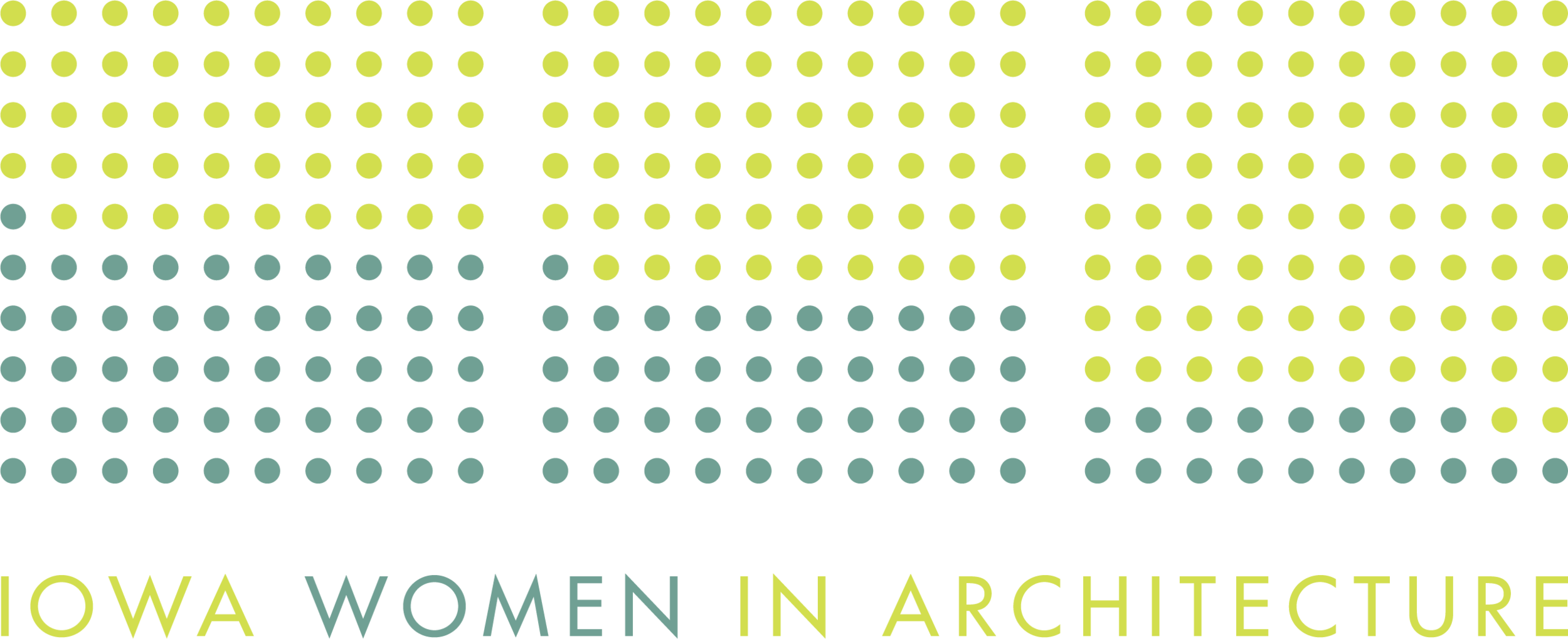Alternative Career Panel - April Educational Event
Event Summary: “Thinking Outside the Box – Exploring Alternative Careers in Design”

On April 13, 2016, Iowa Women in Architecture (iaWia) gathered a talented group of panelists that have all pushed the boundaries of the traditional role of the design professional to explore alternative career paths within our industry.
The moderator and panelists represented diverse design and engineering career paths:
- Moderator: Heidi Pollmann, Confluence (Landscape Architect, Marketing, Golf Course Design)
- Panelist: Matt Brown, Wellmark BCBS (Architect, Owners Representative/Facilities)
- Panelist: Gary Gaiser, Pella Corporation (Architect, Industry/Manufacturing).
- Panelist: Heidi Hohmann, Iowa State University College of Design (Landscape Architect, Academic, Historic Preservation, National Park Service, Private Practice)
- Panelist: Erin Olson-Douglas, City of Des Moines Office of Economic Development (Architect, Private Practice, Academic, Economic Development/Planning)
- Panelist: Brian Schwartz, Baker Group (Architect, Contractor)
Each participant gave a brief summary of their professional journey including their education and the evolution of their careers (both planned and unplanned) that led each to their current role. They provided general career advice as well as advice to professionals who are considering exploring a non-traditional career path. The following is a summary of the advice and moderated discussion.
General Advice & Advice to Those Considering Alternative Career Paths
- Seek out mentors to help you develop as a person and a designer.
- Keep building your networks.
- Get involved in your professional community (e.g., AIA, CSI) as they have many opportunities for mentorship.
- Take every opportunity to think like a designer in whatever setting you are in.
- Get involved in your civic community. You can often learn more in non-profit roles than in a project.
- Be open to learning from other professionals outside the design world.
- If considering an alternative career path, 1) learn the rules of the alternative professional route, and do your networking within that world; 2) gain credibility through registration/licensure; 3) be aware that some alternative career paths offer fewer opportunities for active design which may lead to “Design Guilt” for some, but you can be creative in seeking out other ways to use your design skills in professional or non-professional opportunities.
Planning your Career
- Look at your natural strengths as you think about what roles you want to do. Capitalize on your strengths.
- Diversify and figure out what you do well.
- Consider graduate school as an investment in your career and an opportunity to think hard about what you want to do with your life.
- It is easy to get bogged down in projects/details which leads you to single-track thinking. In order to navigate your career, be conscious and step out of your comfort zone. Find ways to have moments of clarity in which you can recognize your strengths and where you would like to go with your career. Take time to evaluate if you are doing what fits with your purpose.
- Some parts of your career path may be planned, but some are more serendipitous as recessions, illnesses, personal/professional connections or global events (e.g., 9/11) might change your plans or perspective on your career.
- Look at your career through different lenses to help determine your path. One panelist, Brian Schwartz, shared his three lenses: Focus on his Family, Flexibility, Financial.
- Many panelists noted that financial considerations were not a primary driver of career decisions and work-life balance was more important. However, a base-line financial foundation can allow for a stronger work-life balance such as the ability to afford a nanny.
How do designers’ unique skill sets translate to non-traditional areas?
- Designers have tremendous analytical skills that are very desired by many different types of firms.
- Having a design background can be valuable in leading a team that executes the vision established by other designers/architects.
- Problem-solving
- Designers are good at defining a problem, creating a sequence to address the problem and redirecting a solution. This process is used by one panelist in his work on the City Council.
- Visionary Thinking: Design training allows you to help non-designers recognize and solve problems in a visionary way.
- There are many good answers to the same question. Designers realize we can find another solution if one solution is not working.
- In historic preservation, design training provides a deeper understanding of what design elements are able to be restored and worthy of restoration in ways that may be less apparent to a historian.
- Designers are willing to work in a gray zone and recognize that not everything is black and white. You don’t need to have certainty to make progress.
- Panelist design skills also translated into more specific areas such as guiding their employer’s decisions on website design (look, feel, and user-friendliness), social content/marketing an employer’s strengths and the look/feel of proposals.
What could traditional firms learn from your experiences in non-traditional environments?
- Focus on the people you have and develop their careers.
- Treat people as humans and be sure that they are more important than projects. One panelist noted that being at an employer that offers more holidays off (such as Presidents’ Day), makes a huge difference in cheerfulness/morale.
- Address the studio culture attitude.

Summary submitted by Laura Kessel, 5/1/2016.
